Something I made for fun in a different rp, in an even more future setting where the Gorgas actually have their own fleet.
The Reptiles of Reijar all have an indefinite heat resistance, and lifespan, and aside from their reptilian features that is where similarities end. They are the dominant creatures of the planet. Reptiles from Reijar are also more simply referred to as Dragons.
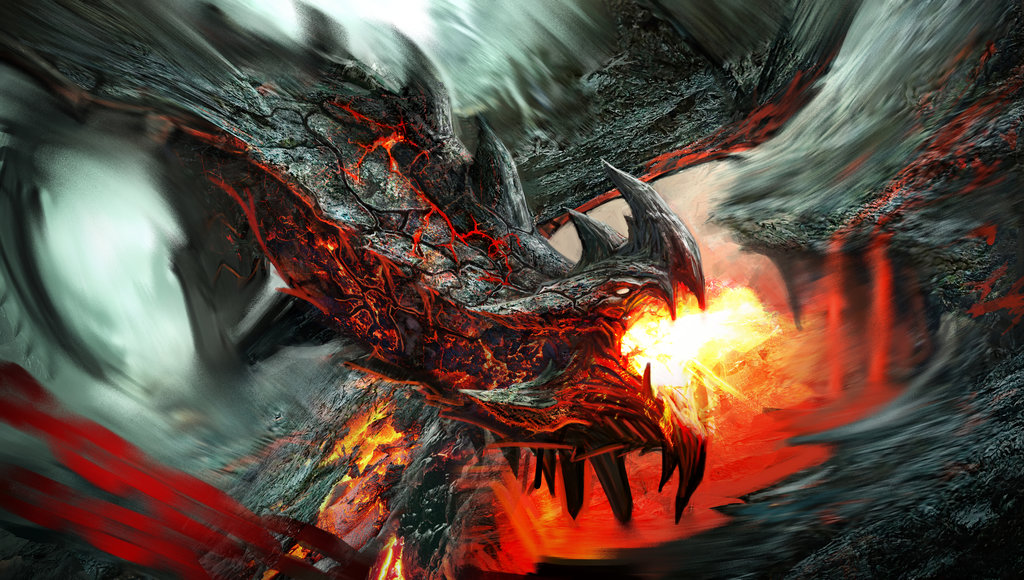

Native to Reijar, these massive reptiles dwell in the molten core of the planet, their diet consists entirely of earthen materials and metals, and require no water for hydration. Instead their bodies quickly become dependent on molten rock for sustenance, which is given clear as much of their skin leaks and radiates the burning substance. They are few in numbers as they rarely breed, and have a similar evolutionary line with many of the other reptiles of the planet, including the Gorgas. They are naturally aggressive creatures and impossible to tame, however the united tribes came with the idea to biologically clone and and create fertilized eggs of their species, plant these eggs into interstellar rockets, and fire them at planets. In addition to being created in a lab, they also plan to use bio engineering technology (another feat that they have yet to have, yet crave for) to make them behave much more aggressive and feed more off of the surface then the internal planet. After being launched into a planet with the explosion burying the eggs beneath the soil. It will take 5 months for the eggs to hatch after impact, and 30 years before they grow into a size suitable enough for them to emerge on the surface and wreak havoc. Their maximum recorded size is 450 feet in length.
The idea to use these creatures is to subjugate enemy planets by infecting them with these lava-dwelling serpents, which have the potential to crush cities and vital regions. This fate is deemed only to those that have especially offended the dragon race, and reserved only for that cause.
Like other reptiles, they are extremely vulnerable to low temperatures, and they are weak and vulnerable within their first 30 years of life. If detected, they can be stopped.
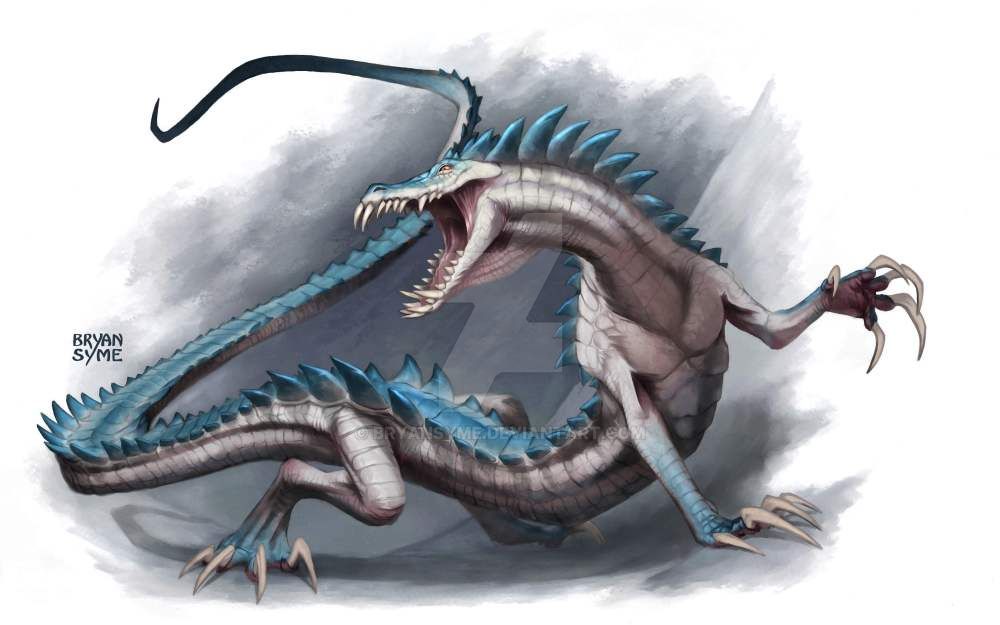
Reptiles native to reijar, these creatures are lone apex predators of the jungle. Like many other reptiles they share an evolutionary tree with the Gorgas and share similar abilities such as tough scales and an indefinite heat resistance. However instead of breathing fire, these giant 23 feet long lizards can have an electric charge in their teeth that when released, their bites can shut down or short-circuit even high tech machinery and equipment. They are incredibly fast and nimble creatures, despite their massive size, and have been known to crawl through tight spaces, air vents in space ships is more then a possibility for them. While Gorgas's historical have been able to train them in the past the question becomes how could they use them in extra-terrestrial warfare? Ideas are still being thrown around as to how they should be used. Either in specialized ground-based troops, specialized pods for ship infiltration, and other methods, but no concrete idea has been schemed as of yet.
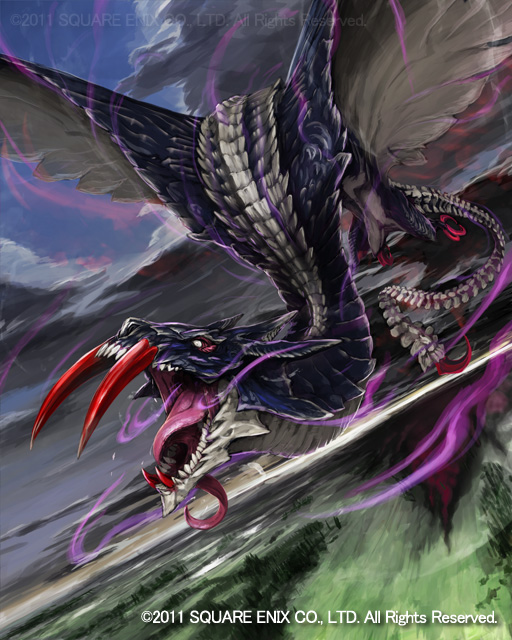
Very much similar to Viper wyverns, and can match both their size and speed. Instead of venom, these creatures have tough carbonized fangs that can easily tear through the hide of almost any creature or armor.

These moderate sized hellkites roam the canyons and deserts of Reijar. Despite their size, strength, and lethal breath, they are not the top predators of their ecosystem. However they are still great predators and are violently aggressive even to would-be predators. They have a wingspan of 50 feet.

Perhaps one of the largest species of wyverns of the Planet reijar, these reptilian beasts can grow over 40 feet in length, and a wingspan of up to 75 feet. The only known wyvern to be larger then Emperor Wyverns are soft scaled wyverns. They have two horns that pertrude from their skulls that are so durable that a charging wyvern could use it to batter down city walls. They can breathe spread-like waves of flames, and have the heat-immunity that other reptiles of the planet have. They are excellent fighters, even with the weight of two heavy Gorgas an Emperor Wyvern can exceed speeds of 150 mph in prolonged flight, and they can fly for hours without stress or tire. The talons of their feet are especially strong. They inhabit the jungles of reijar for most of the year, though during breeding season they flock at the volcanic mountain peaks of the southern pole to breed and raise their young.
Like various other species of wyverns and drakes of Reijar they have been tamed before by the Gorgas. In fact they are the most sought after wyvern due to being able to easily support the weight of a Gorgas rider. Like the thundermaw hunter, it would be difficult to transport them due to their size. New ship designs that can support the cargo of such beasts as well as being able to use them for both or either infiltration or ground-based invasions.
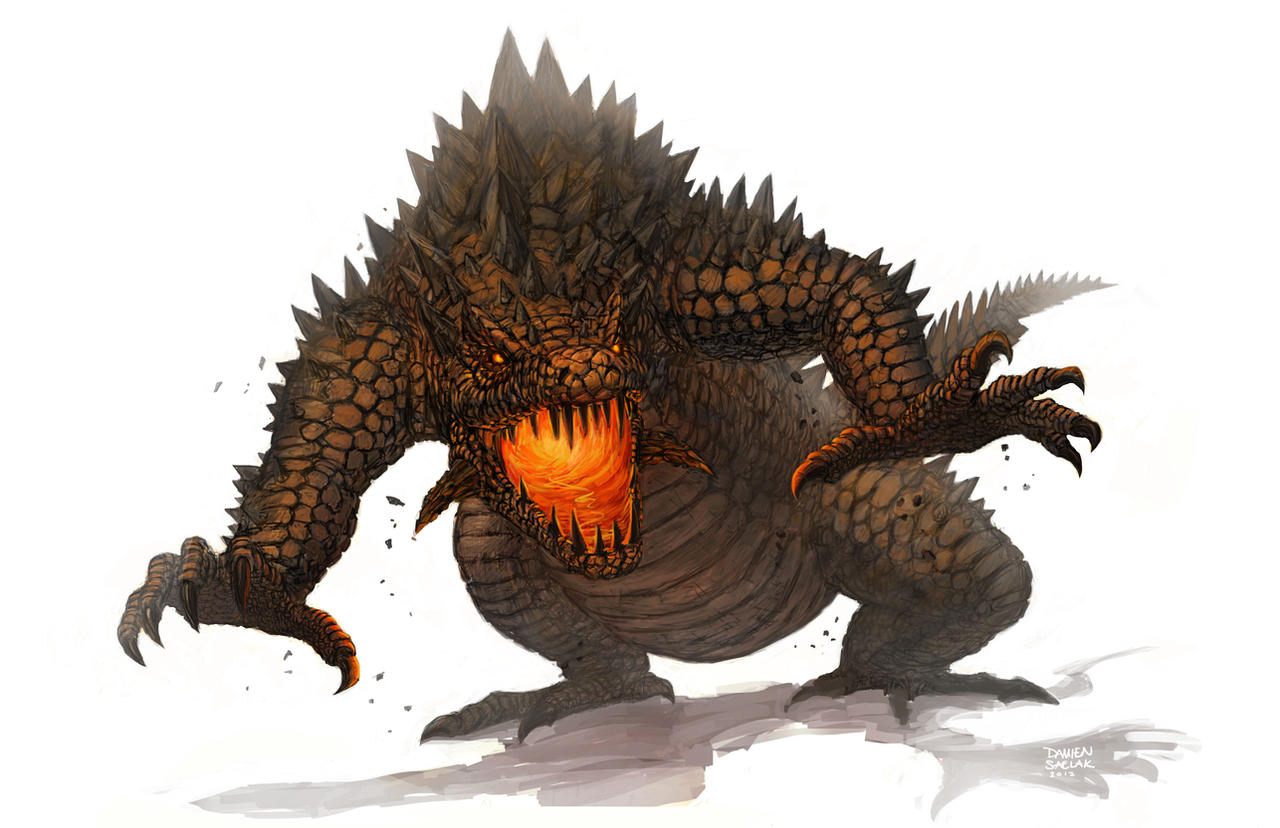
These giant, 81 feet long lizards have iron-like scales and have liquid rock in their stomach instead of acid to break down their food. They have been known to shoot projectile lava from their mouths, and are strong enough to crush boulders. They often inhabit rocky regions or caves, especially in colder regions since their molten-rock belly keeps them from freezing.

Viper wyverns are medium-sized wyverns with a snake-like body. While only growing 19 feet in length, they are swift both on land and in air, as well has having a powerful hemotoxic venom that is located in both their sharp stinger on their tail and their snake-like fangs. They can sprint up to 40 mph and can fly up to twice that speed. Oddly they often reside in small packs and hunt in groups.

These small wyverns are near the bottom of the food chain. Only growing 1 and a half meters in length they have very little defensive traits other then their nimble speed to escape predators. They are both insectivores and scavengers, and are surprisingly social.
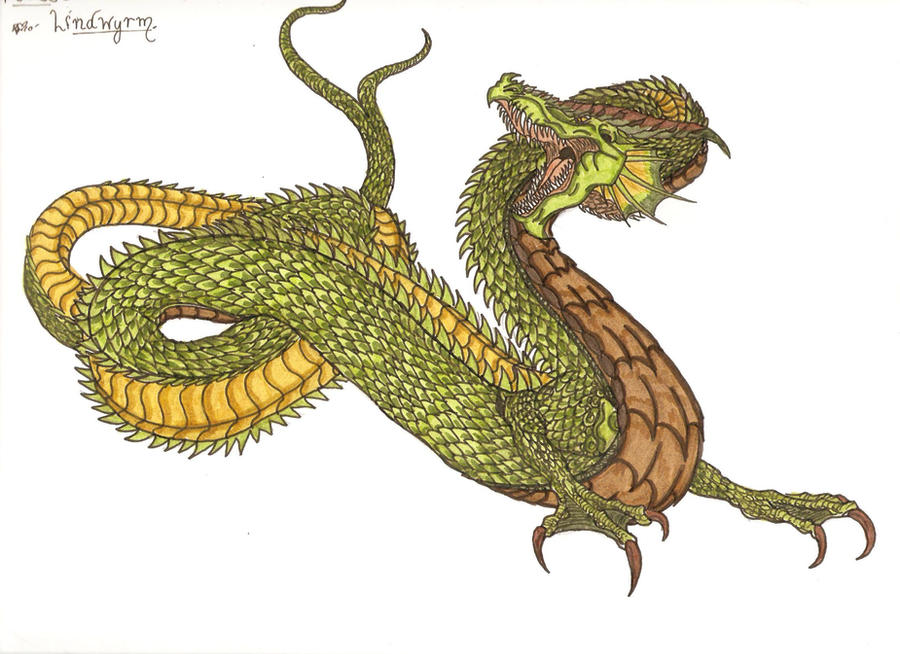
They are somewhat related to swamp serpents, as they also only have two limbs and a serpentine body. However they have two claws that aids in movement instead of wings. While they are not venomous they have a plasma-breath weapon that can rival the likes of an armored titan, and grow to sizes of up to 75 feet in length. In addition to their breath weapon, they are known to constrict with python-like behavior. Another interesting feature is the split tail tips, which is believed to be a feature for mating purposes.

These large desert dwellers sleep on rocks and other tall structures that can support their massive size in the day. They can grow up to 35 feet in length, and can scale rocky walls with their sharp claws. At night they prowl to prey upon whatever they can find. They are opportunistic carnivores, and will settle upon any source of food on sight, including dead corpses. In addition to having a lethal fire breathe, their tails are modified like clubs and can be swung to break the bones of other creatures, they also have a venom that works as a powerful narcotic within their canines. When challenged by a rival or a predator, these massive lizards will extend their hoods in an attempt to intimidate the other.
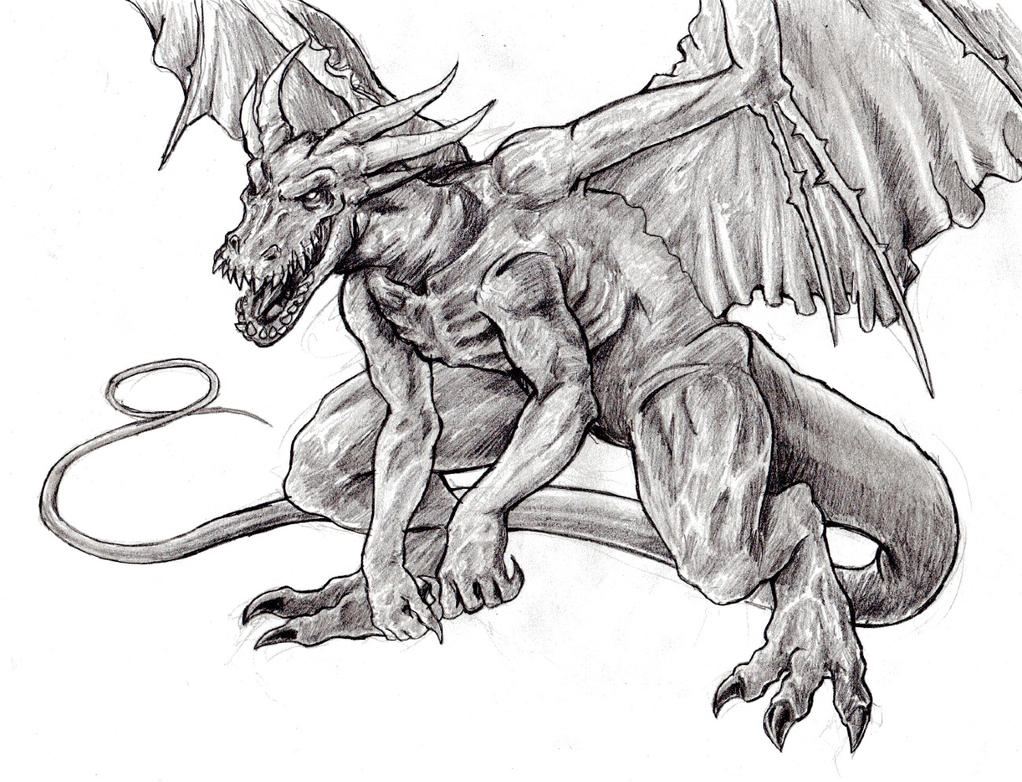
These demon-looking dragons, while not the most feared of creatures, are certainly dangerous as well as infamous for their habit of collecting shiny objects and gems. Growing up to 15 feet in height, these fire breathing reptiles, while a challenge, are not on the high end of the food chain.

Drakiles are large ambush predators that often rest along the edges of rivers and ocean. While they cannot breath fire they are still massive and powerful. The largest of species can grow up to 50 feet in length. They can fly over short distances, and can sprint up to 30 mph on land. They are most proficient in water, as they can swim much faster.
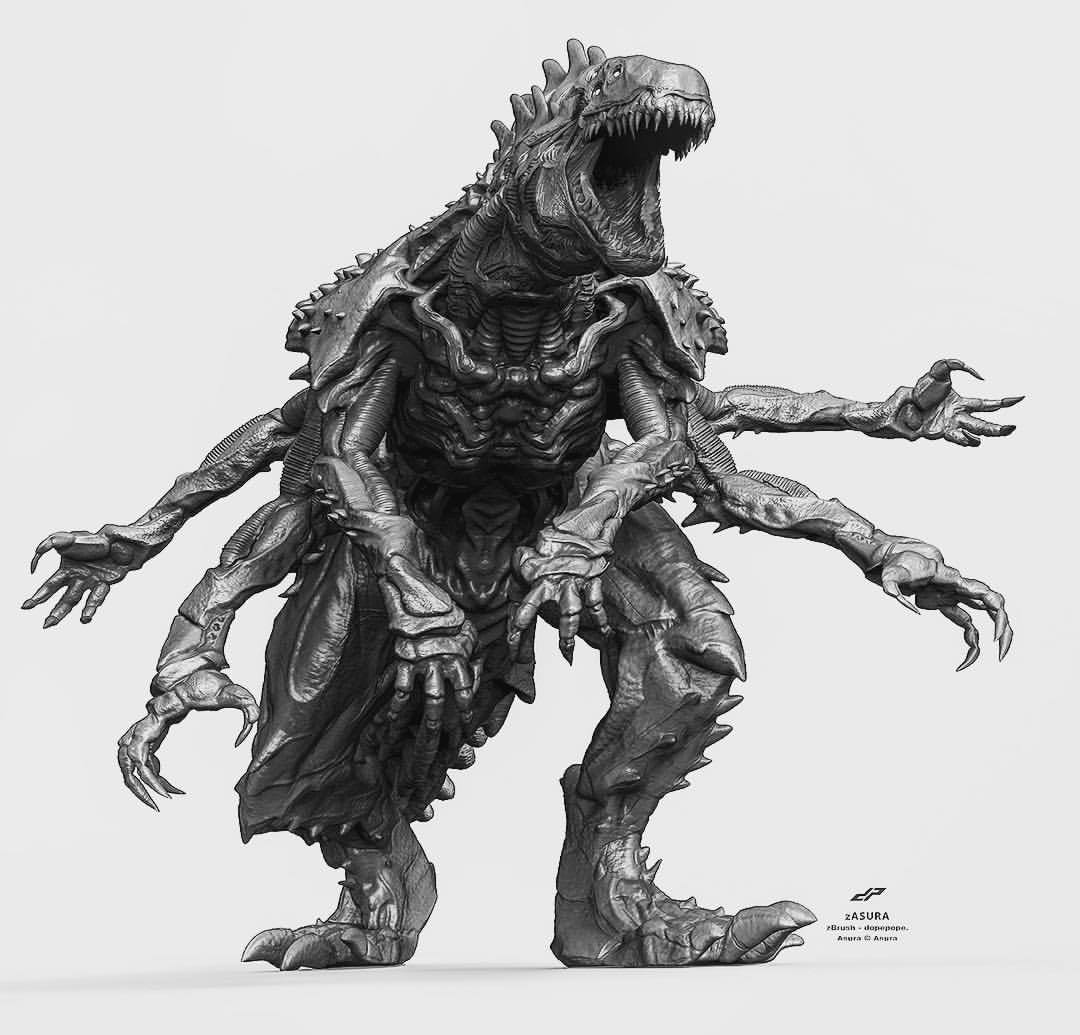
These 6 armed bipedal monsters, while may resemble something related to an arthropod, are actually reptiles. Their armor is as thick as steel plating, more so then the natural armor of other reptiles on the planet. They are one of the most feared monsters of the planet, only surpassed by larger monsters such as the World-Gorger. Instead of breathing fire, these monsters can breathe high-energy beams of plasma with explosive force, even creatures that couldn't be burned by the breath weapon become greatly injured by the physical force the beam delivers. The average individual can be seen between the heights of 40 to 60 feet in height, though there are rare occurrences of those as tall as 120 feet. Each individual arm can lift over a ton. They are notoriously territorial and aggressive, so much so as they will destroy a kilometer of dense jungle if aggravated.
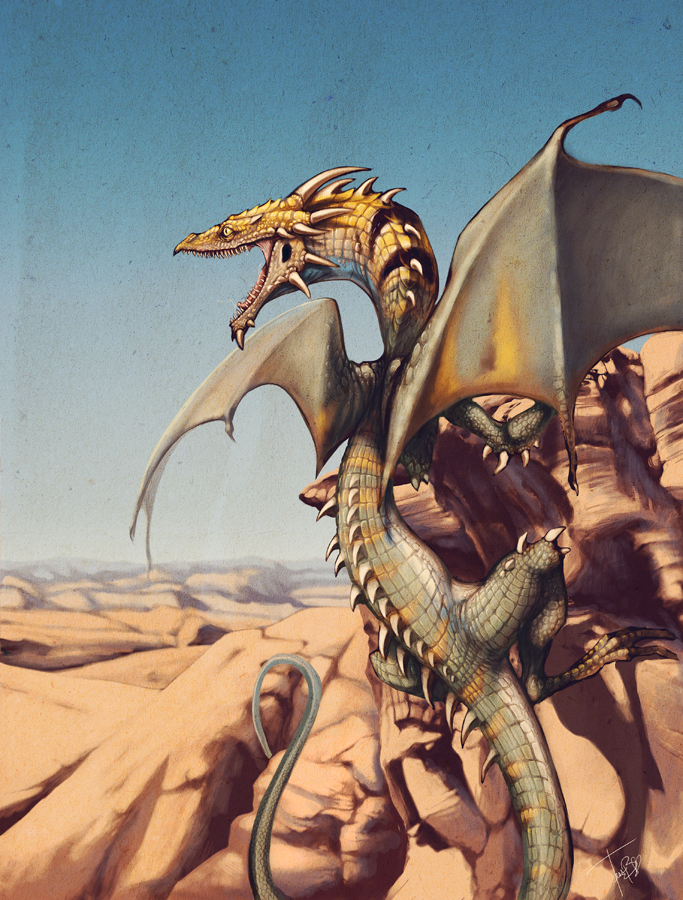
A somewhat common inhabitance of the planet's desert. These small dragons can grow up to 13 feet in length. They are rather fast fliers, but are fairly low on the food chain due to their lack of strength. They cannot breathe fire and they typically scavenge or feed off of small insects.

They are massive beasts that despite their reptilian forms resemble much like wolves. Likewise they have evolved a similar niche the alien species, as they are pack hunters in the jungles of Reijar. Their scales are especially tough, and their saliva has flammable qualities, which ignites when they spit. This can create large orbs of flames that can linger for up to 3 minutes on a surface. They can grow up to 20 feet in length though the alpha of the pack will often be a few feet bigger.
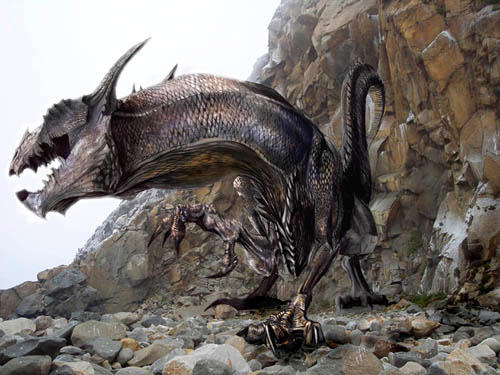
These scavenging mountain-dwellers are excellent cave builders with their 4 modified arms. They can build impressive cave systems in small colonies, and co-exist with other more lethal reptiles for protection in exchange for shelter, such as Cavern Guardians. Mountain scalers can grow up to 23 feet in length, and while they are not on the top of the food chain their caves can still house even more dangerous creatures.
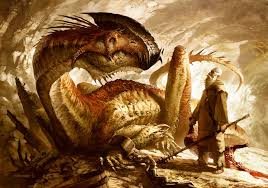
These large lizards love to rest in caves when they are not hunting or sunbathing. They are notoriously lazy as they will rarely leave their claimed home unless in need of food or additional heat. They can breath jets of flames and have a head modified for swinging it like a hammer, which is strong enough to shatter boulders. While lazy and surprisingly docile, an aggravated Cavern Guardian is quick to make a meal of an unwanted intruder. Cavern Guardians can grow up to 40 feet in length.

These snake-like reptiles inhabit the deeper regions of Reijar's jungles, often dwelling in swamps. They can grow over 50 feet in length, and while they have wings they are poor fliers. They are much more resistant to acids and bases than most other reptiles, so much so that they are practically immune to almost every corrosive chemical. They also can spit large amounts of corrosive liquid that is about as corrosive as battery acid. This acid, while it cannot burn or break down reptilian prey in the same way it can break down and dissolve other creatures, can weaken and erode their scales and flesh drastically, and while it can break them down over time, a few seconds of exposure is enough to bite down on the weakened scales of most reptile-based prey items. Due to this they are sometimes refereed to as 'dragon hawks' by locals. They also have a venemous bite that can paralyze prey items as well. They mainly consume food by constriction and swallowing.

These large wyverns are the largest of wyvern species, growing over 50 feet in length, a wingspan of up to 97 feet, and can weigh up to a ton in weight. While massive, their scales are much softer then most of the reptiles on the planet, and are more like tough leather then metal-like bioarmor. They also cannot breath fire. They do however, have sharpened jaw lines that can cut through solid steel easily, let alone crush it. They are much more bulkier then most wyverns as well. Their wings are so strong that their first few flaps off of the ground creates massive gusts of wind and pressure around them, with enough force to tear away small trees within 5 meters of the beast.

This massive, fire breathing predator rivals the soft scaled Wyvern in the food chain, growing to a similar size these hellkites, while not as aggressive, are still very dangerous to encounter. Their behavior can be unpredictable.

A massive humanoid reptile. While sapient their tribal system is even more primitive then that of the Gorgas. These eyeless reptiles can grow up to 9 feet in height, with well armored scales similar to a Gorgas. They cannot breathe fire nor are they as strong as a Gorgas, and they lack wings. They also lack vision, relying on other senses, especially sound, in a form of sonar. They have massive, sharp claws that can cut through even the strongest common metals and alloys. Their back plates are especially armored, and their teeth are just as sharp. They also have rapid regeneration abilities, which aids in them being difficult to kill.

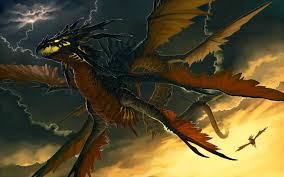
They are closely related to the world gorger wyrms, which is easy to notice their similar size and serpentine bodies. Stormeater wyrms are another rare and greatly feared monster that typically remain in the upper atmosphere of the planet. They only descend to the lower levels to feed. They have a unique diet as while they are carnivores, they also consume energy, particular electric energy, for sustenance. Hence the name, Stormeater, as they can be observed sailing through electric storms and quiet practically swallowing electric currents. Another important source of food are the sky leviathans. A storm eater can move over 100 mph in the air, and remain in a near-dormant state for a few years before needing to look for a food source. Unusually, these creatures have been observed to dwell as high as the exosphere, as they seem to be able to travel past the planet's atmosphere despite gravity, as well as the vacuum of space. They only appear to go to these heights to either swallow a meteor, or a space craft. In rare occurences they have been observed shooting high energy bolts of electric plasma from their mouth that has the capability to destroy a mountain. The largest recorded stormeater was of 850 feet in length.


Native to Reijar, these massive reptiles dwell in the molten core of the planet, their diet consists entirely of earthen materials and metals, and require no water for hydration. Instead their bodies quickly become dependent on molten rock for sustenance, which is given clear as much of their skin leaks and radiates the burning substance. They are few in numbers as they rarely breed, and have a similar evolutionary line with many of the other reptiles of the planet, including the Gorgas. They are naturally aggressive creatures and impossible to tame, however the united tribes came with the idea to biologically clone and and create fertilized eggs of their species, plant these eggs into interstellar rockets, and fire them at planets. In addition to being created in a lab, they also plan to use bio engineering technology (another feat that they have yet to have, yet crave for) to make them behave much more aggressive and feed more off of the surface then the internal planet. After being launched into a planet with the explosion burying the eggs beneath the soil. It will take 5 months for the eggs to hatch after impact, and 30 years before they grow into a size suitable enough for them to emerge on the surface and wreak havoc. Their maximum recorded size is 450 feet in length.
The idea to use these creatures is to subjugate enemy planets by infecting them with these lava-dwelling serpents, which have the potential to crush cities and vital regions. This fate is deemed only to those that have especially offended the dragon race, and reserved only for that cause.
Like other reptiles, they are extremely vulnerable to low temperatures, and they are weak and vulnerable within their first 30 years of life. If detected, they can be stopped.

Reptiles native to reijar, these creatures are lone apex predators of the jungle. Like many other reptiles they share an evolutionary tree with the Gorgas and share similar abilities such as tough scales and an indefinite heat resistance. However instead of breathing fire, these giant 23 feet long lizards can have an electric charge in their teeth that when released, their bites can shut down or short-circuit even high tech machinery and equipment. They are incredibly fast and nimble creatures, despite their massive size, and have been known to crawl through tight spaces, air vents in space ships is more then a possibility for them. While Gorgas's historical have been able to train them in the past the question becomes how could they use them in extra-terrestrial warfare? Ideas are still being thrown around as to how they should be used. Either in specialized ground-based troops, specialized pods for ship infiltration, and other methods, but no concrete idea has been schemed as of yet.

Very much similar to Viper wyverns, and can match both their size and speed. Instead of venom, these creatures have tough carbonized fangs that can easily tear through the hide of almost any creature or armor.

These moderate sized hellkites roam the canyons and deserts of Reijar. Despite their size, strength, and lethal breath, they are not the top predators of their ecosystem. However they are still great predators and are violently aggressive even to would-be predators. They have a wingspan of 50 feet.

Perhaps one of the largest species of wyverns of the Planet reijar, these reptilian beasts can grow over 40 feet in length, and a wingspan of up to 75 feet. The only known wyvern to be larger then Emperor Wyverns are soft scaled wyverns. They have two horns that pertrude from their skulls that are so durable that a charging wyvern could use it to batter down city walls. They can breathe spread-like waves of flames, and have the heat-immunity that other reptiles of the planet have. They are excellent fighters, even with the weight of two heavy Gorgas an Emperor Wyvern can exceed speeds of 150 mph in prolonged flight, and they can fly for hours without stress or tire. The talons of their feet are especially strong. They inhabit the jungles of reijar for most of the year, though during breeding season they flock at the volcanic mountain peaks of the southern pole to breed and raise their young.
Like various other species of wyverns and drakes of Reijar they have been tamed before by the Gorgas. In fact they are the most sought after wyvern due to being able to easily support the weight of a Gorgas rider. Like the thundermaw hunter, it would be difficult to transport them due to their size. New ship designs that can support the cargo of such beasts as well as being able to use them for both or either infiltration or ground-based invasions.

These giant, 81 feet long lizards have iron-like scales and have liquid rock in their stomach instead of acid to break down their food. They have been known to shoot projectile lava from their mouths, and are strong enough to crush boulders. They often inhabit rocky regions or caves, especially in colder regions since their molten-rock belly keeps them from freezing.

Viper wyverns are medium-sized wyverns with a snake-like body. While only growing 19 feet in length, they are swift both on land and in air, as well has having a powerful hemotoxic venom that is located in both their sharp stinger on their tail and their snake-like fangs. They can sprint up to 40 mph and can fly up to twice that speed. Oddly they often reside in small packs and hunt in groups.

These small wyverns are near the bottom of the food chain. Only growing 1 and a half meters in length they have very little defensive traits other then their nimble speed to escape predators. They are both insectivores and scavengers, and are surprisingly social.

They are somewhat related to swamp serpents, as they also only have two limbs and a serpentine body. However they have two claws that aids in movement instead of wings. While they are not venomous they have a plasma-breath weapon that can rival the likes of an armored titan, and grow to sizes of up to 75 feet in length. In addition to their breath weapon, they are known to constrict with python-like behavior. Another interesting feature is the split tail tips, which is believed to be a feature for mating purposes.

These large desert dwellers sleep on rocks and other tall structures that can support their massive size in the day. They can grow up to 35 feet in length, and can scale rocky walls with their sharp claws. At night they prowl to prey upon whatever they can find. They are opportunistic carnivores, and will settle upon any source of food on sight, including dead corpses. In addition to having a lethal fire breathe, their tails are modified like clubs and can be swung to break the bones of other creatures, they also have a venom that works as a powerful narcotic within their canines. When challenged by a rival or a predator, these massive lizards will extend their hoods in an attempt to intimidate the other.

These demon-looking dragons, while not the most feared of creatures, are certainly dangerous as well as infamous for their habit of collecting shiny objects and gems. Growing up to 15 feet in height, these fire breathing reptiles, while a challenge, are not on the high end of the food chain.

Drakiles are large ambush predators that often rest along the edges of rivers and ocean. While they cannot breath fire they are still massive and powerful. The largest of species can grow up to 50 feet in length. They can fly over short distances, and can sprint up to 30 mph on land. They are most proficient in water, as they can swim much faster.

These 6 armed bipedal monsters, while may resemble something related to an arthropod, are actually reptiles. Their armor is as thick as steel plating, more so then the natural armor of other reptiles on the planet. They are one of the most feared monsters of the planet, only surpassed by larger monsters such as the World-Gorger. Instead of breathing fire, these monsters can breathe high-energy beams of plasma with explosive force, even creatures that couldn't be burned by the breath weapon become greatly injured by the physical force the beam delivers. The average individual can be seen between the heights of 40 to 60 feet in height, though there are rare occurrences of those as tall as 120 feet. Each individual arm can lift over a ton. They are notoriously territorial and aggressive, so much so as they will destroy a kilometer of dense jungle if aggravated.

A somewhat common inhabitance of the planet's desert. These small dragons can grow up to 13 feet in length. They are rather fast fliers, but are fairly low on the food chain due to their lack of strength. They cannot breathe fire and they typically scavenge or feed off of small insects.

They are massive beasts that despite their reptilian forms resemble much like wolves. Likewise they have evolved a similar niche the alien species, as they are pack hunters in the jungles of Reijar. Their scales are especially tough, and their saliva has flammable qualities, which ignites when they spit. This can create large orbs of flames that can linger for up to 3 minutes on a surface. They can grow up to 20 feet in length though the alpha of the pack will often be a few feet bigger.

These scavenging mountain-dwellers are excellent cave builders with their 4 modified arms. They can build impressive cave systems in small colonies, and co-exist with other more lethal reptiles for protection in exchange for shelter, such as Cavern Guardians. Mountain scalers can grow up to 23 feet in length, and while they are not on the top of the food chain their caves can still house even more dangerous creatures.
These large lizards love to rest in caves when they are not hunting or sunbathing. They are notoriously lazy as they will rarely leave their claimed home unless in need of food or additional heat. They can breath jets of flames and have a head modified for swinging it like a hammer, which is strong enough to shatter boulders. While lazy and surprisingly docile, an aggravated Cavern Guardian is quick to make a meal of an unwanted intruder. Cavern Guardians can grow up to 40 feet in length.

These snake-like reptiles inhabit the deeper regions of Reijar's jungles, often dwelling in swamps. They can grow over 50 feet in length, and while they have wings they are poor fliers. They are much more resistant to acids and bases than most other reptiles, so much so that they are practically immune to almost every corrosive chemical. They also can spit large amounts of corrosive liquid that is about as corrosive as battery acid. This acid, while it cannot burn or break down reptilian prey in the same way it can break down and dissolve other creatures, can weaken and erode their scales and flesh drastically, and while it can break them down over time, a few seconds of exposure is enough to bite down on the weakened scales of most reptile-based prey items. Due to this they are sometimes refereed to as 'dragon hawks' by locals. They also have a venemous bite that can paralyze prey items as well. They mainly consume food by constriction and swallowing.

These large wyverns are the largest of wyvern species, growing over 50 feet in length, a wingspan of up to 97 feet, and can weigh up to a ton in weight. While massive, their scales are much softer then most of the reptiles on the planet, and are more like tough leather then metal-like bioarmor. They also cannot breath fire. They do however, have sharpened jaw lines that can cut through solid steel easily, let alone crush it. They are much more bulkier then most wyverns as well. Their wings are so strong that their first few flaps off of the ground creates massive gusts of wind and pressure around them, with enough force to tear away small trees within 5 meters of the beast.

This massive, fire breathing predator rivals the soft scaled Wyvern in the food chain, growing to a similar size these hellkites, while not as aggressive, are still very dangerous to encounter. Their behavior can be unpredictable.

A massive humanoid reptile. While sapient their tribal system is even more primitive then that of the Gorgas. These eyeless reptiles can grow up to 9 feet in height, with well armored scales similar to a Gorgas. They cannot breathe fire nor are they as strong as a Gorgas, and they lack wings. They also lack vision, relying on other senses, especially sound, in a form of sonar. They have massive, sharp claws that can cut through even the strongest common metals and alloys. Their back plates are especially armored, and their teeth are just as sharp. They also have rapid regeneration abilities, which aids in them being difficult to kill.

They are closely related to the world gorger wyrms, which is easy to notice their similar size and serpentine bodies. Stormeater wyrms are another rare and greatly feared monster that typically remain in the upper atmosphere of the planet. They only descend to the lower levels to feed. They have a unique diet as while they are carnivores, they also consume energy, particular electric energy, for sustenance. Hence the name, Stormeater, as they can be observed sailing through electric storms and quiet practically swallowing electric currents. Another important source of food are the sky leviathans. A storm eater can move over 100 mph in the air, and remain in a near-dormant state for a few years before needing to look for a food source. Unusually, these creatures have been observed to dwell as high as the exosphere, as they seem to be able to travel past the planet's atmosphere despite gravity, as well as the vacuum of space. They only appear to go to these heights to either swallow a meteor, or a space craft. In rare occurences they have been observed shooting high energy bolts of electric plasma from their mouth that has the capability to destroy a mountain. The largest recorded stormeater was of 850 feet in length.

One of the few mammalian apex predators of Reijar, they inhabit the colder mountain regions of the north pole, where there is little competition of the more common reptilian monstrosities. They are massive beasts, capable of growing well over 3 tons in weight, and can chase prey with speeds of up to 40 mph. Due to how cold it is in their enviorment, they have specialized blood cells that can generate intense thermal heat in response, some of which can be visible especially in the gums.

Though it appears reptilian, Dartrush Raptors are actually mammals. They are completely blind, and rely on sound, smell, and a specialized organ that acts similar to a sonar to track food. They are pack hunters, natural rivals to the Dracolupas species, while they are certainly faster and have bigger numbers compared in average pack size, they cannot breathe flames, nor have the heat immunity or tough scales that reptiles have.
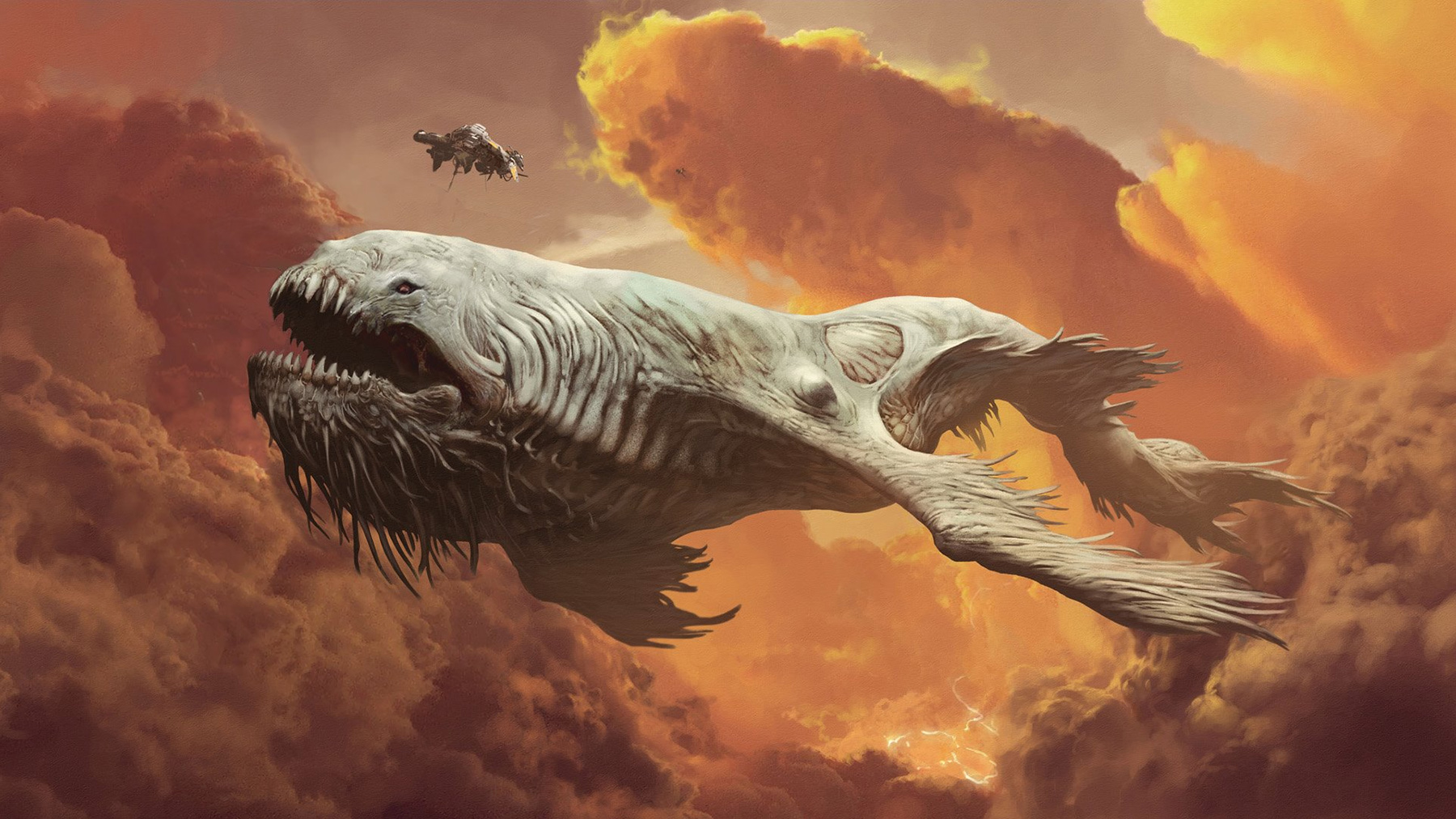
These massive whales surf the skies of Reijar. While these creatures can grow over 300 feet in length and can weight over 145 tons, they still have what seems to be the ability to float in the air. It is unknown the biological methods of how they are capable of doing this. These unique creatures get their sustenance from solar energy as well consuming flocks of birds that are as abundant as krill, as well as the occasional small-medium sized wyverns. There are otherwise very passive creatures, the corpse of a Sky Leviathan is sought after by many carnivores of Reijar, as well as the Gorgas Tribes. A single Carcass could feed a tribe for over three years.
Infant Sky Leviathans are often preyed upon by other sky dwelling predators, but once they reach adult sized their only natural predator are the Storm-eater Wyrms.
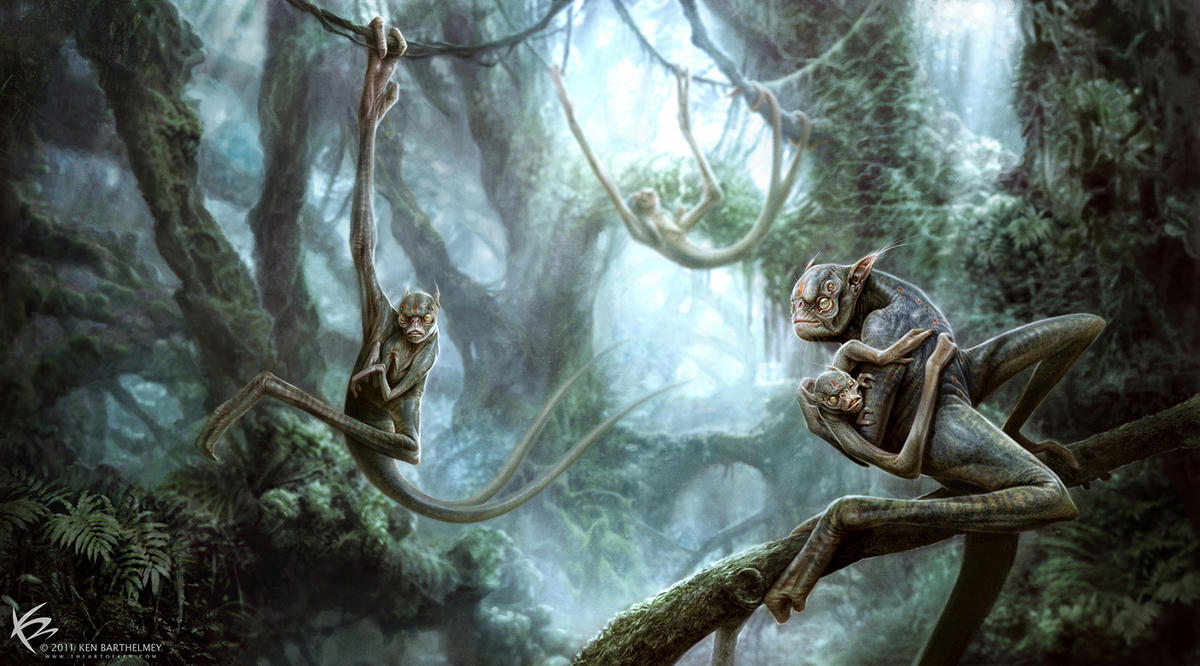
These hairless, six limbed mammals are similar to earthly primates, with a similar intelligence and social structure. They hide from most of their predators in the trees, and feed off of berries, leaves, and insects. In addition to having incredible vision and hearing, they can climb on almost any surface. The largest can grow up to three feet in height

One of the largest Arthropods on Reijar, these monstrous spiders as scaled in the picture are unusually active for a spider. They will often make large webs in canyons and jungle openings, and during the night they will leave their webbed shelter to hunt on foot. They are notorious for being able to eat a variety of reptilian creatures and all but the largest of dragons seem to avoid trying to eat these behemoths. While rare, they are certainly frightening to come across. Their fangs are so sharp that they can pierce through most reptilian armor.
Asil parasites are perhaps the most volatile specimens of Reijar despite being the smallest. They are single celled organisms that can exist in extreme environmental conditions. The parasite seems to have a single conscience by some sort of telepathic network that comprises of every single specimen that belongs to the Asil parasites. Starting out as singular cells, through mere contact they can infect an organism. Once infected, the cell will begin to absorb the specimen, breaking down cells and absorbing both DNA and RNA. While this can go unnoticed for 3 days, after a week this process will quicken to a point where the host suddenly seemingly disintegrates or dissolves in a matter of seconds. Once there is nothing left for the parasite cell to absorb, it will then evolve into a perfect clone of the host, gaining all of its intelligence and memory, as well as biological details and structure. However the cells still belong to the Asil parasite group, which is the only analytical difference, making the 'clone' part of the hivemind. Once an asil parasite can clone a specimen, the hivemind can use any part or sort of the clone's genes, dna, intelligence, and other biological details to either produce new clones, or new creatures built up from various different parts of different clones. By order of the hivemind, it can choose to either force evolve cells that haven't infected a host, or let that cell infect a new victim. They can also evolve new traits and defenses to get through almost any roadblock or hazard, with one exception.
The paleleech parasites somehow remain immune and unstoppable against the Asil parasites, and due to their ability to even infect the very hivemind network itself, asil parasites are forced to cut off asil parasite communities to preserve its own existence. So long as paleleech parasties remain on Reijar, the Asil parasites cannot take over. They remain in extremely rare cut-off areas of Reijar. Gorgas individuals that had been infected with Asil parasites will often commit suicide and have their bodies either buried or dumped in volcanic lakes to either assure the asil cell's destruction or keep it from infecting others. This martrydom, as well as the influence of the paleleech parasites, have kept the race from the hands of the hivemind.
The origin of the Asil parasites are unknown, though due to their unique DNA and biology it is most likely they are from another planet, and it is even more so likely that there hivemind expands farther then Reijar. Likewise, it is unknown about the paleleech parasites. Their origins can only point to Reijar, so it is speculated that they had evolved some sort of unsurpassed ability to combat the hivemind threat.
The paleleech parasites somehow remain immune and unstoppable against the Asil parasites, and due to their ability to even infect the very hivemind network itself, asil parasites are forced to cut off asil parasite communities to preserve its own existence. So long as paleleech parasties remain on Reijar, the Asil parasites cannot take over. They remain in extremely rare cut-off areas of Reijar. Gorgas individuals that had been infected with Asil parasites will often commit suicide and have their bodies either buried or dumped in volcanic lakes to either assure the asil cell's destruction or keep it from infecting others. This martrydom, as well as the influence of the paleleech parasites, have kept the race from the hands of the hivemind.
The origin of the Asil parasites are unknown, though due to their unique DNA and biology it is most likely they are from another planet, and it is even more so likely that there hivemind expands farther then Reijar. Likewise, it is unknown about the paleleech parasites. Their origins can only point to Reijar, so it is speculated that they had evolved some sort of unsurpassed ability to combat the hivemind threat.
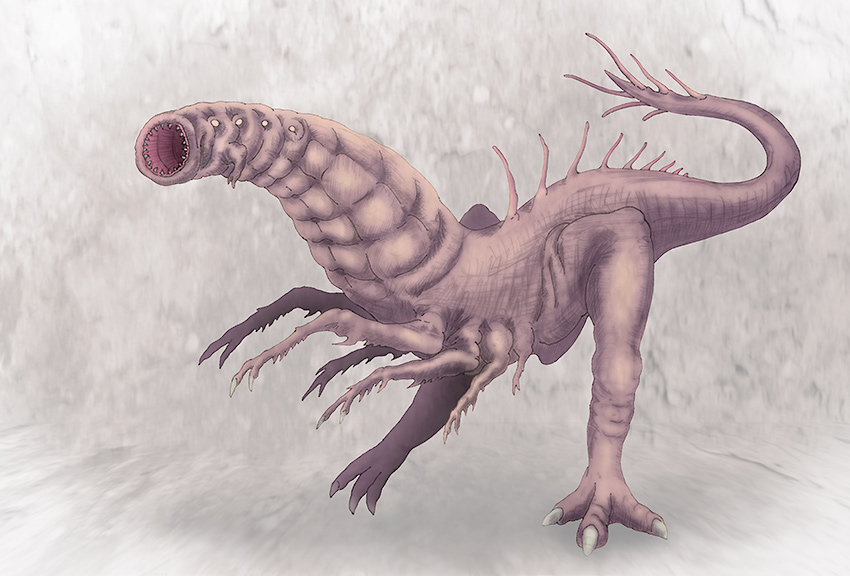

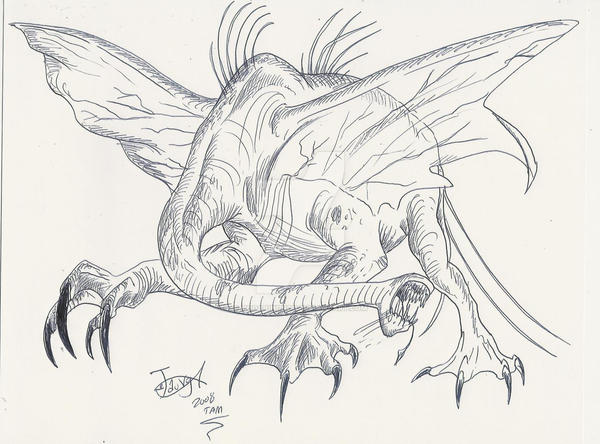
The paleleech parasites are one of the few non-reptilian creatures native to Reijar that are high up on the food chain. Their species have many different stages within their life cycle, even specialized and evolved versions to sastisfy different enviorments. Their adaptability is one of their most dangerous trait, but most have remained vulnerable to fire. While they are not a hive mind they are very 'social' creatures similar to ants by instinct, within their own species. They are the natural predators of the asil parasites, which are hiveminded single cell organisms that break down and assimilate other creatures.
The paleleech parasites are uniquely evolved to combat and nuetralize hivemind and assimilation based organism, each individual cell of a paleleech absorbs any form of bio matter that attempts to 'assimilate', breach, or cover their cell walls. The exact method on how they are able to do this is unknown, though it is theorized that this is aided by a powerful micro-acid or base.
Whats even more remarkable is that once they start absorbing cells of a local hivemind species, they began to counter-assimilate the hive mind. It is also unknown how they are able to 'hack' into biological hive mind networks. Regardless a pale leech parasite can 'connect' into a hivemind, and stream that information to the paleleech's parent. Once this is performed, the paleleech parent will continue to spawn other leech's in porportion to the hive's population, and will continue to gestate hivemind bioforms. After the two initial stages, if the hivemind is powerful enough to still be active, their mental network will start to become corrupted by a 'virus' like affect of the paleleech's 'hacking', where bioforms and cells that belong to the hivemind start to become 'seperated' from the hivemind's control, and are instead brainwashed into letting themselves be consumed by the paleleech population. This continues until the paleleech population can no longer detect the hivemind.
Whats even more remarkable is that once they start absorbing cells of a local hivemind species, they began to counter-assimilate the hive mind. It is also unknown how they are able to 'hack' into biological hive mind networks. Regardless a pale leech parasite can 'connect' into a hivemind, and stream that information to the paleleech's parent. Once this is performed, the paleleech parent will continue to spawn other leech's in porportion to the hive's population, and will continue to gestate hivemind bioforms. After the two initial stages, if the hivemind is powerful enough to still be active, their mental network will start to become corrupted by a 'virus' like affect of the paleleech's 'hacking', where bioforms and cells that belong to the hivemind start to become 'seperated' from the hivemind's control, and are instead brainwashed into letting themselves be consumed by the paleleech population. This continues until the paleleech population can no longer detect the hivemind.
The larva stage starts out as a microscopic leech-like creature that is completely white. Their mouth has hundreds of small fangs that can rip open into soft flesh, but are otherwise mostly featureless. Overtime they can grow over 3 meters in length before evolving to their next stage
The Larva is the first and infantile stage of the Paleleech parasite. Paleleech parasites often get their nutrients from areas ripe with asil parasites, or fauna. If there is so hivemind population for the paleleech to consume, they will resort to attacking other fauna, in a similar matter to tape worms. They will find various accesses such as drinkable water, dead carcasses, or if they are large enough, penetrate a living creature themselves. However they can only achieve the latter if they already have achieved a length a meter. They will continue to feed off of biomatter in a parasitical fashion until they have reached suffucient mass to evolve.
The Larva is the first and infantile stage of the Paleleech parasite. Paleleech parasites often get their nutrients from areas ripe with asil parasites, or fauna. If there is so hivemind population for the paleleech to consume, they will resort to attacking other fauna, in a similar matter to tape worms. They will find various accesses such as drinkable water, dead carcasses, or if they are large enough, penetrate a living creature themselves. However they can only achieve the latter if they already have achieved a length a meter. They will continue to feed off of biomatter in a parasitical fashion until they have reached suffucient mass to evolve.
It is often that they will evolve into the state straight out of the host they were feeding on. Hunters vary in appearance depending upon their environment and prey items they have adapted themselves to hunt. They may also evolve extremely varying adapations to counter almost any measure to assure they will achieve to hunt whatever it is they have evolved for. Some may resemble an 8 legged serpentine creature with pincers for mouths. However they are limited to a biomass of 600 lbs, give or take a couple hundred depending upon how much the larva stage has consumed. Hunters only in low populations or populations that would otherwise require lonewolf-like predators or unique defenders to the nest.
They can mimic many traits, abilities, and forms of other creatures, as well as rapidly evolve traits to satiate a hostile environment or to be able to consume biomass they otherwise couldn't feat upon. They do seem to be unable to adapt to many of the traits belonging to the reptiles of Reijar though, strangely. They have strong carapaces and are highly resistant to acids, venom, and other biological pathogens.
Drones will build colonies to house a queen paleleech if a population has increased enough. Drones resemble a mix between an ant and a centipede-like monstrositiy, with legs that resemble some sort of hyrbid of arthropodic and tentacle-like features. They will often dig in tough or soft enviorments and/or build their nest out of various biomass. Such as plant-litter, as well as their own building material generated from their saliva which is basically a quick-hardening green slime, as well as using powerful webs. Drones are not only the main workforce of the hive but also its defenders.
Similar to drones, but smaller and have insectoid wings on their back. Scouts are often used to locate an ideal location for a nest.
behemoths like hunters have a form that varies extremely on environments and other factors. However unlike hunters these rarer forms grow up to titanic proportions. The largest variations are capable of crushing cities.
Once a colony has been established, one of the paleleech's will evolve into the queen parasite. The queen resembles a massive white arthropod with a crab-like body, 4 crab-like pincers, 12 pairs of eyes, 8 speared tentacles, and 3 pairs of massive insectoid legs. They also have a large scorpion-like tail, and can weigh up to 3 tons.
The queen mass produces larva, as well as essentially acts as the leader of the colony through what is believed to be telepathic means. However it is unlikely that they are a hivemind, as their are cases were individual parasites leave the colony, or seemingly betray orders on an ideal of free will. It is theorized that paleleeches may be very well sentient, though they seem to have know method of communication outside of their own species.
The 4 tentacles of the queen can lay hundreds of microscopic eggs, they have been known to inject eggs into captured fauna or individuals that seemingly try to betray the loyalty of the hive. The larva will then proceed to slowly eat the host alive into they are all ready to grow and burst out of the host's body. The tail is also venomous, and the queen can spew vats of powerful hydrochloric acid.
The queen mass produces larva, as well as essentially acts as the leader of the colony through what is believed to be telepathic means. However it is unlikely that they are a hivemind, as their are cases were individual parasites leave the colony, or seemingly betray orders on an ideal of free will. It is theorized that paleleeches may be very well sentient, though they seem to have know method of communication outside of their own species.
The 4 tentacles of the queen can lay hundreds of microscopic eggs, they have been known to inject eggs into captured fauna or individuals that seemingly try to betray the loyalty of the hive. The larva will then proceed to slowly eat the host alive into they are all ready to grow and burst out of the host's body. The tail is also venomous, and the queen can spew vats of powerful hydrochloric acid.
it is uncertain how they would be able to control such creatures, but the Gorgas believe it may be the key to counter various alien races and extra terrestrial biological threats that have a similar behavior to the asil parasites of their homeworld. Essentially ideal for an 'anti assimilating/hivemind species' though they are just as dangerous to the Gorgas themselves.
